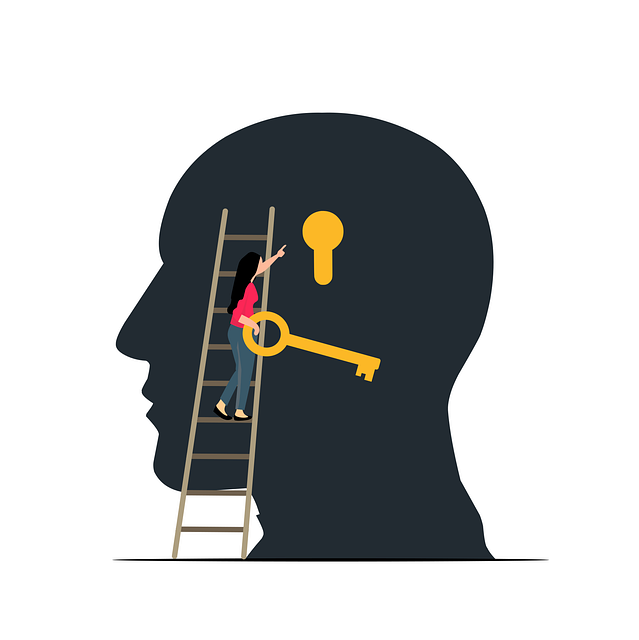Teaching emotion regulation through bilingual therapy is a powerful way to enhance the mental wellness of young children. Combining their primary language with simple techniques, caregivers and educators can help kids understand and manage emotions from an early age. This involves recognizing feelings, understanding bodily sensations, and learning soothing strategies. Bilingual therapy, along with cultural competency training for healthcare providers, creates a supportive environment where children feel safe to explore and express their emotions. Practical techniques like deep breathing and mindfulness activities are crucial tools in these sessions, fostering emotional vocabulary in both languages and significantly impacting overall development. Integrating emotion regulation into daily routines, such as playtime or bedtime stories, promotes positive emotional growth.
Emotion regulation is a vital skill for young children to navigate their feelings and interact with the world around them. This comprehensive guide explores effective techniques to foster emotional intelligence, particularly in bilingual environments. We delve into the benefits of teaching emotional skills in therapy sessions, offering practical strategies for professionals. Additionally, we provide valuable tips for parents and caregivers to support their child’s emotional growth, ensuring a holistic approach to helping young minds manage emotions healthily.
- Understanding Emotion Regulation for Young Children
- The Benefits of Teaching Emotional Skills in Bilingual Environments
- Practical Techniques to Implement in Therapy Sessions
- Tips for Parents and Caregivers to Support Emotional Growth
Understanding Emotion Regulation for Young Children

Understanding emotion regulation is a vital step in teaching young children effective coping strategies. At an early age, kids are learning to navigate their feelings and emotions, making it crucial for caregivers and educators to introduce simple yet powerful techniques. The goal is to empower them with mind over matter principles, enabling them to manage intense emotions before they escalate. Bilingual therapy can play a significant role here, as it allows children to express themselves in their primary language while teaching essential emotion regulation skills.
This process involves recognizing and labeling feelings, understanding the bodily sensations that accompany them, and learning age-appropriate strategies to sooth or redirect those feelings. With proper guidance, young learners can develop emotional intelligence early on, which is a cornerstone of overall mental wellness. Healthcare provider cultural competency training and mental wellness coaching programs development are essential components in creating supportive environments where children feel safe to explore and express their emotions, fostering healthy developmental trajectories.
The Benefits of Teaching Emotional Skills in Bilingual Environments

Teaching emotional skills in bilingual environments offers a unique opportunity to enhance the mental wellness of young children. In a world where many families and communities embrace multiple languages, it’s crucial to integrate emotion regulation techniques that cater to this diverse population. Bilingualism presents both advantages and challenges when it comes to emotional expression and understanding. On one hand, being multilingual can foster enhanced cognitive flexibility and cultural sensitivity, enabling children to navigate different social contexts with increased self-awareness. This awareness is a cornerstone in crisis intervention guidance, allowing for more effective coping strategies during stressful situations.
By incorporating self-awareness exercises tailored to bilingual settings, therapists can empower young clients to recognize and manage their emotions across languages. This approach not only supports overall mental wellness coaching programs development but also strengthens the child’s sense of identity and cultural pride. Research suggests that early intervention with emotion regulation techniques can prevent or mitigate emotional difficulties later in life, making it a valuable tool for educators and therapists working with bilingual children and families.
Practical Techniques to Implement in Therapy Sessions

In therapy sessions focused on teaching young children, particularly those in bilingual settings, practical emotion regulation techniques are essential tools. Techniques such as deep breathing exercises and mindfulness activities can help children identify and manage their emotions effectively. For instance, guiding kids through simple meditative practices, like counting breaths or scanning bodies for sensations, empowers them to become aware of their feelings and respond to them calmly. These methods are culturally sensitive, promoting a safe space where diverse experiences are acknowledged, fostering trust and engagement, especially when tailored to the child’s linguistic background.
Integrating these strategies requires healthcare provider cultural competency training to ensure approaches are age-appropriate and respectful of individual and familial beliefs. Additionally, risk management planning for mental health professionals is vital to handle potential emotional triggers or challenges that may arise during sessions. Encouraging self-care practices among both therapists and clients—a crucial aspect of any therapy—can mitigate stress and create a supportive environment conducive to learning and growth.
Tips for Parents and Caregivers to Support Emotional Growth

Teaching young children emotional regulation skills is a crucial aspect of their overall development and mental wellness. For parents and caregivers, supporting this process can make a significant impact on a child’s ability to manage and express emotions healthily. One effective strategy is incorporating therapy into daily routines, such as playtime or bedtime stories. Bilingual therapy, in particular, can be beneficial for diverse families, allowing children to develop emotional vocabulary in both languages.
Encourage children to keep a mental wellness journal where they can draw or write about their feelings. This simple exercise provides guidance on recognizing and communicating emotions. Additionally, engaging in open conversations about emotions and teaching basic breathing techniques are valuable tools for mood management. Consider designing activities that incorporate these concepts into fun learning experiences, ensuring a positive approach to emotional growth.
Teaching emotion regulation skills is a valuable asset for young children, especially in bilingual environments. By understanding the unique challenges these children may face, therapists and caregivers can employ practical techniques to enhance emotional intelligence. The benefits are far-reaching, fostering healthier relationships and improving overall well-being. Incorporating these strategies into therapy sessions and daily routines can empower both children and adults to navigate their emotions effectively, creating a more supportive and inclusive environment for all.














